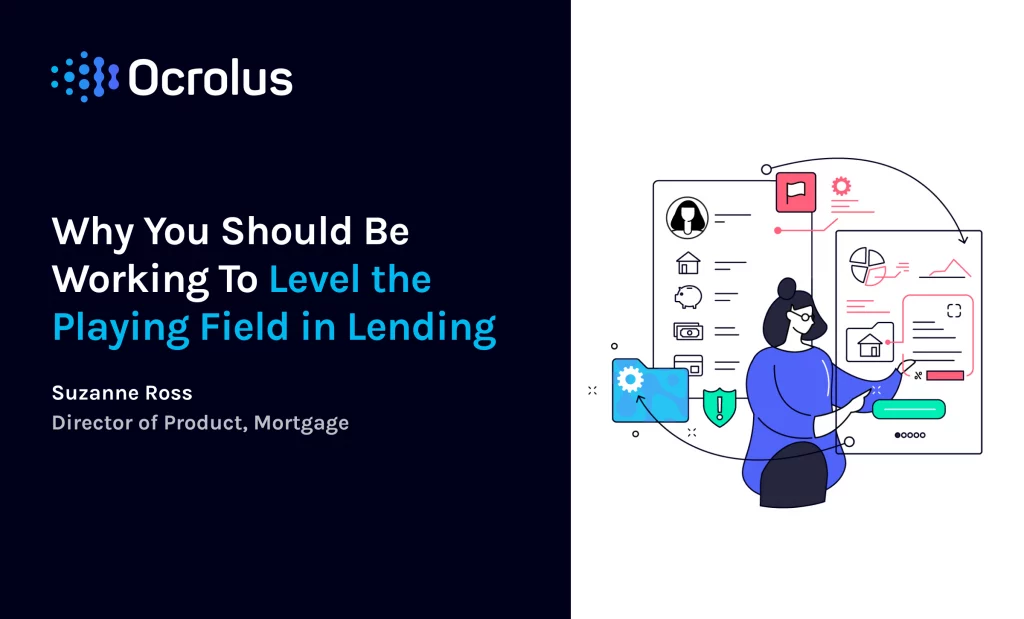This website uses cookies so that we can provide you with the best user experience possible. Cookie information is stored in your browser and performs functions such as recognising you when you return to our website and helping our team to understand which sections of the website you find most interesting and useful.
Why You Should Be Working To Level the Playing Field in Lending

The easiest mortgage to underwrite is one for a traditional borrower with only traditional W-2 income. However, more and more potential borrowers are opting out of W-2 employment due to self-employment and seasonal or contractual work. Some juggle those options along with a W-2 job. As the work world changes, mortgage lenders would be wise to simplify the mortgage process for these borrowers with nontraditional income sources.
One in ten potential borrowers applying for a mortgage is now self-employed. As a result of the “Great Resignation” and the widespread preference for remote, flexible work, that number is growing.
Rather than focusing only on traditional W-2 earners that fit within rigid lending programs, savvy mortgage lenders should be working to level the playing field, finding ways to attract and simplify the process for all borrowers that demonstrate the ability to repay.
A Rise in Nontraditional Earners
In 2021, approximately 10 million Americans were self-employed. And the ranks of the self-employed continue to grow: In 2021, more than 38 million workers voluntarily left their jobs as part of the “Great Resignation.” And many of those—at least 32 percent, according to one survey—left to start their own businesses.
In addition to those who are self-employed full-time, growing numbers of Americans are combining a regular W-2 job with a side hustle. In early 2021, more than one-third of Americans had a side hustle, according to a national survey. The data showed that many of those side hustles were relatively new: 67 percent said they started their side business within the past three years, and 31 percent started it in 2020. More than 61 million Americans had plans to take on a side hustle during 2021.
Traditionally, applying for and getting approved for a mortgage has been a more complex process for self-employed individuals. During the pandemic, the process has become even more restrictive. For instance, in 2020, most mortgage lenders began requiring self-employed individuals to submit additional paperwork, such as a business profit and loss statement in addition to multiple business bank statements and other relevant factors to determine the extent to which the business may have been impacted by the pandemic. Most lenders must also verify that the borrower’s business is still open and operating within 20 days before closing the loan.
A Contracting Mortgage Market
All those extra requirements surrounding the approval of nontraditional borrowers make it easy for mortgage lenders to simply focus on traditional borrowers, especially in an oversaturated mortgage market, as we’ve experienced for the past couple of years. However, change is on the horizon, if not already here.
Interest rates are predicted to rise in response to the Fed’s promise to increase the federal funds rate three times this year. As a result, the mortgage market is poised to shrink slightly in 2022.
As the market for mortgage originations shrinks, lenders will be forced to compete for fewer borrowers. And increasingly, those borrowers are likely to have self-employment income or other forms of nontraditional income. The most successful lenders will be those prepared to serve nontraditional earners and simplify the mortgage process for them.
Competing for Nontraditional Earners
Because the requirements are more stringent for self-employed borrowers, many entrepreneurial workers may simply assume they can’t qualify for a mortgage loan. Others may hesitate to apply because they assume the process will be lengthy and frustrating.
Most self-employed individuals also work to maximize income while reducing tax liability with strategies such as business income deductions. While that works well in business, reducing tax liabilities translates into lower reported income—and that can make it more challenging to qualify for a mortgage loan.
Lenders can help overcome this challenge by expanding their portfolio of loan products, such as bank statement loans or other non-qm product offerings, to better determine creditworthiness and approve nontraditional borrowers in a more nontraditional way. Additionally, lenders can attract self-employed borrowers by simplifying their approval process. For example, you can use an automated solution to analyze applicants’ cash flow and calculate applicants’ income in minutes.
Some nontraditional earners have assets spread across a number of accounts or personal assets being used for the business, which can make it difficult to determine an applicant’s net worth. But, an automated solution can make it easy to understand applicants’ assets, including finding hidden assets.
Using more metrics to approve borrowers can level the playing field for self-employed borrowers. And with automated solutions, you can do it more quickly, processing applications almost instantly.
The Ocrolus platform makes it easy for lenders to access the power of AI to simplify mortgage approvals and much more. Learn more about mortgage automation at Ocrolus.com.






